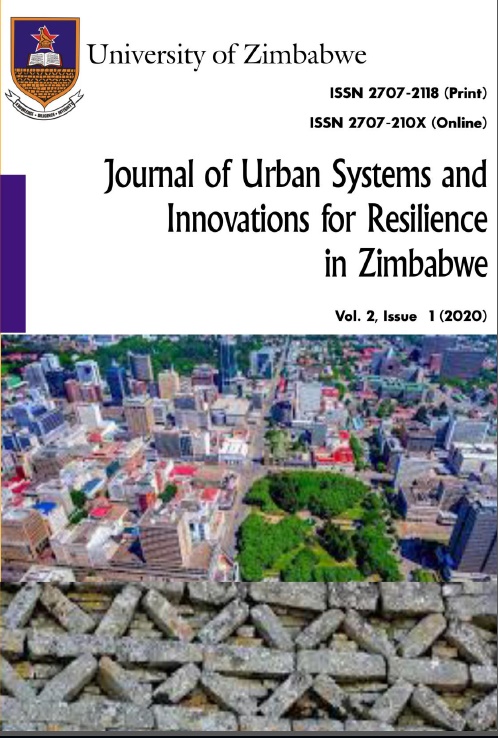Exploring the Interface and Lessons for Resilience-focused Urban Planning in Zimbabwe
Keywords:
resilience, risk-sensitive, hazard, informality, urban, planningAbstract
This article argues that urban areas face a multitude of risks that are likely to worsen, due to climate change. Traditional blueprint planning commonly practised in cities of the developing world tends to be top-down and not fit for the dynamic urban future. Planners have not kept pace with changing urban systems and processes that have tended to accentuate social and economic risks. A resilience-focused urban planning integrating socio-economic, political and physical drivers of city growth and change enables urban residents to leap forward, rather than bounce back to worse conditions that cause disasters. A resilience-informed urban planning approach should not only focus on the technical or engineering designs of the city, but also on socio-political and evolutionary processes that consider urban settlers as rational change agencies who are capable of defining their future. Challenges, including urban informality, are not necessarily hazards to be ruthlessly dealt with, but potentials to strengthen livelihoods and become pathways to resilience if planners adopt a resilience-focused planning approach. An understanding of disaster risks and city resilience processes and drivers that are normally context specific is pertinent if urban planning is to promote resilience-building and contribute towards sustainable development.




